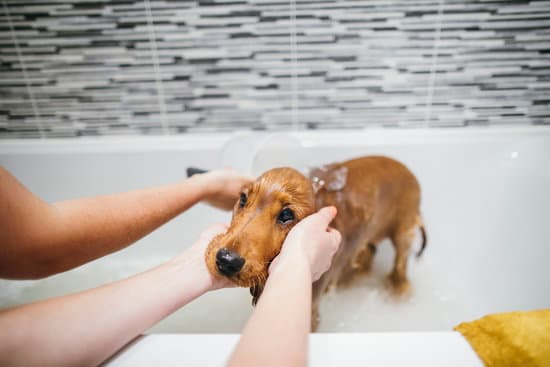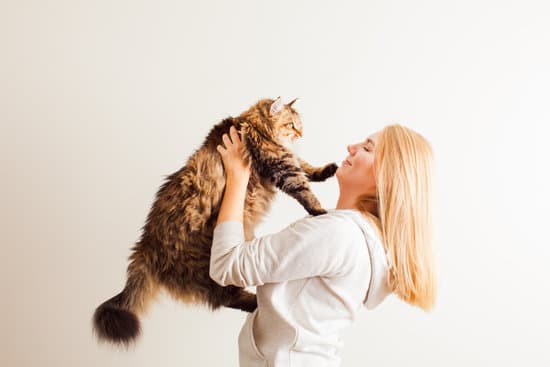7 Tips to Help Your Dog Love Bath Time
Dogs are known for their love of play, exercise, and exploring the outdoors. However, when it comes to bath time, many dogs seem to be less enthusiastic. Some dogs may even run and hide when they hear the sound of running water. Bathing your pooch is essential for their health and hygiene, but it doesn’t have to be a stressful experience for you or your furry friend.
To help make bath time a more enjoyable experience for your pooch, here are 7 tips that you can try at home. These tips are based on expert advice from veterinarians and experienced dog owners. By following these tips, you can help your pooch feel more comfortable and relaxed during bath time, and even turn it into a fun bonding experience for both of you.
Understanding Your Dog’s Bathing Needs

Bathing your pooch is an essential part of their grooming routine. However, not all poochs enjoy taking a bath. Understanding your pooch’s bathing needs can help make the process more enjoyable for both you and your furry friend.
Frequency of Bathing
The frequency of bathing your dog depends on their breed, activity level, and skin condition. Dogs with oily skin or those who spend a lot of time outdoors may require more frequent baths. On the other hand, poochs with dry skin or those who spend most of their time indoors may require fewer baths.
Water Temperature
The temperature of the water used during the bath is also crucial. Dogs have a higher body temperature than humans, so the water should be lukewarm, not hot. Hot water can burn your pooch’s skin and cause discomfort.
Shampoo Selection
Choosing the right shampoo for your pooch is important. Dogs have a different pH level than humans, so using human shampoo can dry out their skin. Look for shampoos specifically formulated for poochs that are gentle on their skin.
Bathing Environment
Creating a comfortable bathing environment can help your pooch feel more relaxed during the bath. Use a non-slip mat in the bathtub to prevent your pooch from slipping. Play calming music and give your pooch treats to distract them and make the experience more enjoyable.
Drying
Drying your pooch after the bath is also important. Use a towel to dry off excess water and then use a blow dryer on a low setting to dry their coat. Be careful not to use the blow dryer on high heat as it can burn your poochs skin.
Professional Grooming
If you find it challenging to bathe your pooch at home, consider taking them to a professional groomer. Professional groomers have the necessary tools and experience to make the process more comfortable for your furry friend.
Conclusion
Understanding your pooch’s bathing needs can help make the process more enjoyable for both you and your furry friend. By following the tips mentioned above, you can ensure that your pooch stays clean and healthy without causing them any discomfort.
Creating a Positive Bathing Environment

Choose the Right Location
When it comes to bathing your pooch, choosing the right location is crucial. You want to find a spot that is comfortable for both you and your furry friend. Ideally, the location should be warm, well-lit, and free from any distractions. A bathroom or laundry room with a non-slip floor is a great option. If you don’t have access to a bathtub, you can use a plastic kiddie pool or a large sink.
Ensure Comfortable Water Temperature
It’s important to make sure the water temperature is comfortable for your pooch The ideal temperature is lukewarm, around 100°F. Use a thermometer to check the water temperature before you start bathing your dog. If the water is too hot or too cold, your dog may become uncomfortable or even agitated. Always test the water temperature with your hand before you start bathing your dog.
Use Dog-Friendly Bath Products
Using the right bath products can make a big difference in your dog’s bathing experience. Look for pooch-friendly shampoos and conditioners that are specifically formulated for your dog’s coat type. Avoid using human shampoos or soaps, as they can be too harsh for your pooch’s skin. Additionally, make sure to rinse your dog thoroughly to avoid any residue that can cause skin irritation.
By following these tips, you can create a positive bathing environment for your pooch, making bath time a more enjoyable experience for both you and your furry friend.
Gradual Acclimation to Bathing
Introduce the Concept Slowly
Dogs can be afraid of water and bathing, so it’s important to introduce the concept of bathing slowly. The first step is to let your pooch get used to being near the bathroom or wherever you plan to bathe them. You can do this by bringing them into the room and giving them treats or playing with them.
Once your dog is comfortable being in the bathroom, you can start introducing them to the bathtub or shower. Let them sniff around and explore the area while giving them treats and praise. You can also try putting treats in the tub or shower to encourage them to go in.
Associate Bath Time with Positive Experiences
To help your dog enjoy bath time, it’s important to associate it with positive experiences. You can do this by giving them treats and praise throughout the bathing process. You can also try playing calming music or using calming scents to help your pooch relax.
Another way to associate bath time with positive experiences is to give your pooch a special treat or toy that they only get during bath time. This will give them something to look forward to and make bath time a more enjoyable experience.
By gradually introducing your pooch to bath time and associating it with positive experiences, you can help them overcome their fear of water and make bath time a stress-free experience for both you and your furry friend.
Effective Bath Time Techniques
Secure Handling During the Bath
When bathing your dog, it is essential to ensure that they feel safe and secure. You can achieve this by using a non-slip mat at the bottom of the tub to prevent your dog from slipping and injuring themselves. Additionally, it is crucial to keep your hand on your pooch at all times to prevent them from jumping out of the tub.
You can also use a grooming loop to keep your pooch in place while you bathe them. A grooming loop is a collar that attaches to the tub or a nearby wall and prevents your pooch from moving around too much. This technique is especially useful for larger poochs that may be difficult to control during bath time.
Gentle Cleaning Methods
To make your dog enjoy taking a bath, it is essential to use gentle cleaning methods. Start by wetting your pooch’s coat with warm water, and then apply a mild dog shampoo. Avoid using human shampoo, as it can be too harsh for your pooch’s skin.
When washing your dog, be gentle and avoid scrubbing too hard. Use a soft brush or your hands to massage the shampoo into your pooch’s coat. Rinse your pooch thoroughly with warm water to ensure that all the shampoo is removed.
After the bath, use a towel to dry your dog’s coat. Avoid using a hairdryer, as it can be noisy and scary for your pooch. Instead, let your pooch air dry or use a towel to pat them dry.
By using these effective bath time techniques, you can make your pooch enjoy taking a bath and ensure that they are clean and healthy.
Rewards and Positive Reinforcement

Treats and Praise
Rewarding your dog with treats and praise is an effective way to encourage good behavior during bath time. Offer your dog a treat after each step of the process, such as getting into the tub or standing still while being rinsed. This will help your pooch associate positive experiences with bath time.
In addition to treats, praise your dog for good behavior. Use a happy and excited tone of voice to let your pooch know they are doing a great job. This positive reinforcement will encourage your dog to continue behaving well during future baths.
Post-Bath Playtime
After bath time, give your dog some extra attention and playtime. This will help reinforce the positive experience of taking a bath. Play with your pooch’s favorite toy or engage in a game of fetch. This will help your dog associate bath time with fun and play, rather than a negative experience.
Overall, using rewards and positive reinforcement can make bath time a more enjoyable experience for your pooch. By offering treats and praise, and engaging in post-bath playtime, you can help your pooch associate bath time with positive experiences.
Maintaining a Regular Bathing Schedule
Regular bathing is essential for maintaining your dog’s hygiene and health. It helps to keep their skin and coat clean, free from dirt, and prevents the buildup of bacteria and parasites. Establishing a regular bathing schedule can also help to prevent skin irritation and other skin-related issues.
The frequency of bathing your dog depends on various factors such as breed, coat type, and lifestyle. Dogs with oily coats and those that spend a lot of time outdoors may require more frequent baths than those with dry coats and indoor lifestyles. As a general rule, bathing your pooch once every 4-6 weeks is sufficient for most dogs.
When bathing your dog, it is important to use a mild dog shampoo that is specifically formulated for their skin type. Using human shampoo or other harsh chemicals can cause skin irritation and dryness. It is also important to rinse your pooch thoroughly to remove all shampoo residue.
In addition to regular bathing, you can also maintain your dog’s hygiene by regularly brushing their coat, trimming their nails, and cleaning their ears. This can help to prevent the buildup of dirt and bacteria, and keep your pooch feeling and looking their best.
By establishing a regular bathing schedule and maintaining your pooch’s hygiene, you can help to keep them healthy and happy.
Addressing Common Challenges

Fear of Water
For some poochs, the fear of water can be a major obstacle to enjoying bath time. This fear may be caused by a traumatic experience, lack of exposure to water, or simply a natural aversion. To help your pooch overcome their fear of water, try the following tips:
- Gradual exposure: Start by introducing your pooch to water in a calm and controlled environment. Use a small amount of water and gradually increase the amount as your dog becomes more comfortable.
- Positive reinforcement: Reward your pooch with treats and praise for calm behavior around water. This will help create positive associations with water.
- Patience: It may take time for your pooch to overcome their fear of water. Be patient and don’t force them into situations that make them uncomfortable.
Uncooperative Behavior
Some dogs may become uncooperative during bath time, making the experience stressful for both the pooch and owner. To address uncooperative behavior, try these tips:
- Desensitization: Gradually expose your dog to the tools and environment associated with bath time. This will help them become more comfortable and less reactive.
- Distraction: Provide your dog with a toy or treat to keep them occupied during bath time. This will help redirect their attention away from the bath.
- Positive reinforcement: Reward your dog for calm behavior during bath time. This will help reinforce good behavior and make the experience more enjoyable for them.
By addressing these common challenges, you can help your dog enjoy bath time and maintain good hygiene without stress or anxiety.









